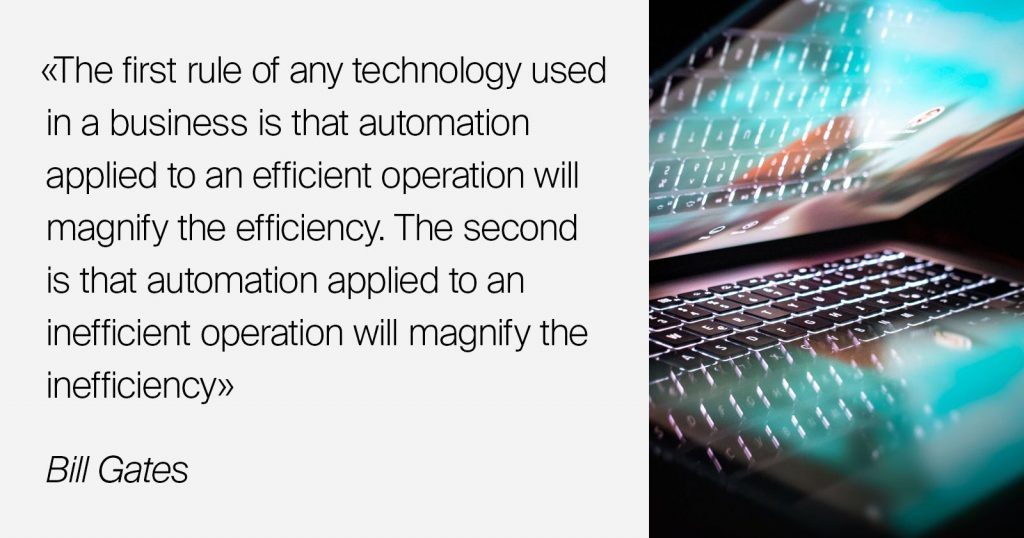Microsoft predicts that about 95% of all user interactions will involve AI or similar technologies within four years, while Juniper Research estimates that by 2022 companies could save $ 8 billion in customer support through automation. These predictions sound very plausible in a world where people want to receive information quickly and easily. This article explores how the use of an auto-dialling service can help free up staffing resources and reduce costs for your business.

Bill Gates’ first rule undoubtedly applies to customer calls. Almost every company on the market periodically practices calling out to the collected contact base. It is a reliable way to stay in touch with customers, attract cold audiences, deliver important information, and gather necessary data. At the same time, calling can put a strain on resources in terms of costs and staffing. Automating this process can significantly cut the company’s expenses and increase customer loyalty.
The Auto-call system can make hundreds of calls simultaneously, at any time of the day, while logging a detailed report on each call’s results. No call centre staffed by human agents can boast the same since people still have to dial numbers, wait for an answer, repeat the scripted dialogue and call back later if the client did not pick up the phone.
Research by Adobe Digital Insights (ADI) has shown that the average daily frequency of workflow automation mentions increases every year, and the positive reviews are predominantly associated with time savings (30%). It also makes the processing of large amounts of data much easier (25%).
What can an auto-dialler do?
Autodial is a simple, rational and cost-effective way of communicating with clients. It allows you to perform many routine tasks, freeing up human agents to tackle more complex issues.
The system calls the subscriber from the contact base and connects him with the operator or the IVR (Interactive Voice Response) voice menu. Automation can be used only at the early stages of conversation when the system dials the customer and immediately connects him with a free operator. In other scenarios, the client can get all the necessary information from the pre-recorded voice messages without agent intervention.
The IVR system is perfect for alerts, reminders, surveys, or handling typical requests. The subscriber can access the information of interest through a special voice menu by pressing keys in a tone mode (less often — by voice using speech recognition technology). This form of interaction is becoming more relevant now, when millennials, who usually prefer to avoid live phone conversations, are taking over the consumer market.

Benefits of IVR
- Reduces the burden on call centre operators and secretaries, giving them time to handle more complex problems efficiently.
- Increases the company’s prestige since an interactive menu has already become a crucial element of the corporate style.
- Allows the company to use the budget more efficiently by saving on salaries, taxes and telephony.
- Saves time for clients and company.
- Allows you to track the level of customer service through built-in analytics.
- Reduces or eliminates the influence of the human factor in customer service.
Auto-call — for everyone
The autodial function will be helpful both for large corporations (mobile communications, banks, insurance companies, payment systems, etc.) that work with huge contact databases, and for small and medium businesses, where customer satisfaction is the primary focus. According to statistics, 96% of respondents note that the quality of customer service primarily affects their brand loyalty. Good service today requires speed, accuracy and consistency — precisely what an auto-dialler can provide.
Auto-call works great in the following scenarios:
Informing clients. Auto-dialling is a great way to communicate important information to a vast customer base and get instant feedback without the participation of live agents. A pre-recorded voice message is played to the client, and employees are connected only to provide additional explanations, if necessary.
Automatic reminders about appointments, events or payments.
Transactional messages. The Auto-call service is available 24/7, regardless of when the customer performs the target action like going through registration, making an authorisation attempt, requesting a callback, etc.
Warming up the “cold” audience. Many consumers who are not yet informed about a product or service can be “warmed up” a little without the human agents’ participation. By pressing buttons in the digital dialling menu, subscribers can show the degree of their interest, and at the next stage, live agents can join the conversation with filtered potential customers.
Polls. It is much more convenient and economical to conduct marketing research or subscriber surveys, sort and analyse information automatically, and customers are more willing to answer questions if the survey does not involve an actual telephone conversation.
Voice matters
How automated voice messages sound directly affects the customer experience. This is the brand’s calling card. Lively and understandable text immediately attracts the attention of new customers and increases the trust of existing ones. It is essential that the recording is of high quality, clear, without extraneous noise. At all stages, the voice should be identical and have the same volume, and the speed and intonation should correlate with the nature of the company’s business. An energetic young voice is perfect for companies that provide fast services. But more respectable organisations, like legal or insurance companies, would benefit from “adult” measured speech patterns.
The duration of one message in the IVR system should not exceed 15 seconds.
Sometimes companies use a recognisable personality to narrate the message. For example, the lecturer himself sends a reminder about an upcoming lecture, or the company’s director can directly report company news to the subscriber. Obviously, the consumer understands that this is a recording, but a move like this greatly increases loyalty.
And a few more tips for setting up IVR:
- Use no more than 5-7 items on the voice menu; the service should be short, simple and straightforward.
- Make sure to add the options to contact the live agent from the main menu and to return to the very beginning from any branch of the script. According to Microsoft, 30% of customers consider not speaking to a real person when necessary to be one of the most frustrating moments of a bad customer experience.
- If the client has to wait for the agent’s response, inform them of their position in the queue — no one likes being left in the dark.
- Offer helpful information instead of music on standby. You will not satisfy every client’s musical tastes anyways.
- Let the person know they are listening to a pre-recorded speech.
- Do not use incriminating messages, such as “Input error!”
- Add an option to repeat the messages.
In today’s world, where bringing your customer service to the next level is the main way to stand out in the market, automation is becoming one of the primary keys to success. It allows you to get more loyal and satisfied customers at a lower cost for the company. And yet, this is not an easy science, especially when it comes to such intimate contact with a client such as through phone calls. Contact our experts, and we will help you find the right strategy for integrating Auto-call service into your business.

